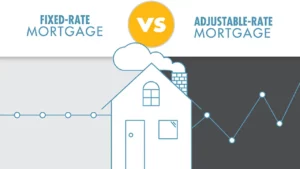Mortgagerateslocal.com – The worries of bills, mortgages, and financial obligations are a thing of the past. Sounds dreamy, doesn’t it? But how can you make this dream a reality? That’s where annuitization and income riders come into the picture. Today, let’s delve into the fascinating world of annuitization vs income rider and discover which option is your key to financial security.
Did you know that according to the National Institute on Retirement Security, nearly 40 million working-age households in the United States have no retirement savings whatsoever? It’s a staggering number that calls for urgent action. We all deserve a comfortable retirement after years of hard work, and making the right financial choices is crucial to achieve that goal.
Now, imagine you’ve diligently saved a significant nest egg for retirement. You want that money to work for you, to generate a steady stream of income that will last as long as you do. This is where annuitization vs income riders come into play. These two options offer different strategies, and understanding their nuances can make a world of difference in securing your financial future.
So, what exactly is annuitization? In simple terms, it’s the process of converting a lump sum of money into a guaranteed income stream for life. In other words, you give up control over your principal, and in return, you receive a set amount of money every month, ensuring a consistent income for as long as you live. On the other hand, an income rider is an optional add-on to an annuity that provides a guaranteed income stream on top of any potential market gains.
Curious to know more about the benefits, risks, and considerations of annuitization vs income riders? Stay with us as we delve deeper into these options. By the end of this post, you’ll have a clear understanding of which choice aligns best with your financial goals and aspirations.
Understanding Annuities and Income Riders

Annuities, in the most basic sense, are financial products designed to provide a regular income stream for retirees. They are typically purchased from insurance companies and can be structured in various ways to meet different requirements. Two common methods of receiving payments from annuities are through annuitization and by utilizing income riders.
Annuitization
Annuitization involves converting a lump sum of money into a series of guaranteed payments over a specified period. Essentially, it means giving up control of your total investment in exchange for a predetermined income stream that lasts until the end of the annuity contract term.
Here’s how it generally works: once you annuitize your contract, the insurance company assumes the responsibility of managing the funds and distributing regular payments to you. The amount you receive as income primarily depends on your initial investment, the annuity’s contract terms, your life expectancy, and the prevailing interest rates at the time of annuitization.
One of the significant advantages of annuitization is the assurance of a fixed income for life. As the payments are predetermined, you can plan your expenses accordingly, allowing for better financial stability during retirement. However, it is essential to note that once the annuitization process begins, it is difficult to alter or access the principal investment. This lack of flexibility is a trade-off for the guaranteed income.
Income Riders
Income riders, on the other hand, are optional add-ons to annuity contracts that offer an alternative way to receive payments. Instead of annuitization, income riders provide a guaranteed income stream while still maintaining control over the principal investment.
With income riders, you have the freedom to access and manage your initial investment while simultaneously receiving regular payments. These riders are typically designed to protect against potential market downturns, providing a minimum income level regardless of the underlying performance of the investment.
Income riders come in various forms, such as guaranteed minimum withdrawal benefits (GMWB), guaranteed minimum income benefits (GMIB), or guaranteed minimum accumulation benefits (GMAB). Each type offers different features and benefits, so it’s essential to carefully review the terms and conditions before opting for an income rider.
Annuitization Vs Income Rider

When it comes to retirement planning, understanding the options available is crucial to make informed decisions that align with your financial goals. Two popular strategies for generating retirement income are annuitization and income riders. While both approaches provide a guaranteed income stream, they differ in several key aspects. Let’s delve into the details to grasp the nuances of annuitization vs income riders.
Payment Flexibility
One significant difference between annuitization vs income riders lies in the payment flexibility they offer. With annuitization, the payments are fixed, and once you initiate the process, they generally cannot be altered in the future. This lack of flexibility can be either advantageous or disadvantageous, depending on your specific circumstances.
On the other hand, income riders provide a more adaptable approach. They allow you to adjust the income stream to accommodate your changing financial needs. This flexibility can be immensely helpful, especially if you anticipate fluctuations in your expenses during retirement.
For instance, if you face unexpected medical expenses or wish to take a lavish vacation, having the ability to increase or decrease your income stream with an income rider can offer the needed financial maneuverability.
Guarantee Period
Another crucial distinction between annuitization and income riders lies in the guarantee period. Annuitization ensures a lifelong income stream, meaning you will receive payments for as long as you live. This feature provides a sense of security, particularly for individuals concerned about outliving their retirement savings.
Income riders, on the other hand, might come with a guarantee period that ensures payments for a specific number of years, regardless of your lifespan. This guarantee period acts as a safeguard, ensuring that you or your beneficiaries continue to receive income even if you pass away before the designated period ends.
While annuitization’s lifelong income stream can be reassuring, income riders with a guarantee period offer added flexibility and peace of mind. It all depends on your unique financial circumstances and risk tolerance.
Costs
Annuitization generally does not entail additional costs beyond the annuity product itself. In contrast, income riders come with fees that can vary based on the specific rider and your annuity contract. Make sure to carefully consider the potential benefits against these costs when deciding which option aligns best with your financial objectives.
Investment Growth Potential
One distinct advantage that income riders offer over annuitization is the potential for investment growth. When you opt for annuitization, you exchange your principal balance for a guaranteed income stream. As a result, you forfeit the opportunity for further investment growth.
Income riders, on the contrary, allow your money to continue growing even after you start receiving income. This growth potential opens the door to increased income in the future. It can be particularly appealing for individuals seeking to generate higher income to keep up with inflation or fulfill other financial goals during retirement.
However, it’s important to note that investment growth potential comes with some level of risk. The market performance can impact the amount of income your investments generate. Thus, it’s crucial to assess your risk tolerance and consult with a financial advisor to determine the most suitable strategy for your retirement income needs.
Which Option is Right for You?

In the realm of retirement planning, the decision between annuitization and income riders is not one to be taken lightly. Both options offer their own set of advantages and considerations, making it crucial for individuals to carefully assess their personal goals, risk tolerance, and financial situation.
While annuitization provides the allure of a predictable income stream, it may lack the flexibility and potential for growth that some retirees desire. On the other hand, income riders offer the promise of flexibility, growth potential, and protection against market downturns.
When it comes to annuitization, the key advantage lies in the certainty it provides. By opting for this strategy, individuals can expect a predetermined income stream that is typically guaranteed for life. This level of predictability can be highly appealing, especially for retirees who prioritize stability and regularity in their finances.
Additionally, annuities often come with various payout options, allowing individuals to choose between a single life annuity or joint-life annuity, depending on their needs and preferences. However, it is important to note that annuitization may come with its fair share of limitations.
One primary concern is the lack of flexibility once the decision has been made. Once an individual commits to annuitization, they may have limited access to the principal amount or face penalties if they want to withdraw more than the agreed-upon income stream. This lack of liquidity can be restrictive for individuals who anticipate the need for additional funds in the future or desire the freedom to make financial adjustments based on their evolving circumstances or goals.
Conclusion
In conclusion, annuitization and income riders are two popular strategies to generate retirement income from annuities. While annuitization offers a fixed stream of income for life, income riders provide flexibility and potential for growth. The choice between the two ultimately depends on an individual’s financial goals, risk tolerance, and preferences for income stability or growth potential.




